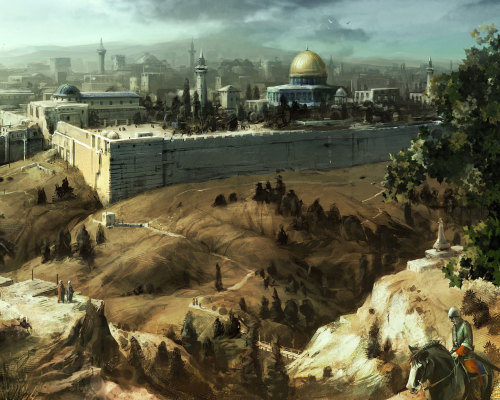Characters in games are, of course, extremely important. The character you play as is the conduit for which you experience the game itself. You play as that character, you tend to believe that you are them; you therefore take on their roles and motives throughout the game.
For games to be immersive, for them to have the ability to draw the player in and give them a unique experience, they must have forms of emotional attachment to the character they play or other characters that they encounter. If you have sympathetic feelings towards the character, if you can relate to their emotions and motives, you start to believe in the character. They become more real.
Game designers try to make the character you play believable and also relative to you by many different tactics. As you play, they make you feel what the characters feel. They try to get you to feel as confused as they are. Their emotions, by seeing a terrible tragedy happen, or experience some form of betrayal, are meant to be understood by you, the player. You can sympathise with their fear, anger, happiness, and as you get more attached to them, you start to become them. You want the character to succeed, and generally you want to help them to achieve a happy ending.
If the developers can get it so that you always want to see what happens next, like you want to see the characters’ story unfold, then it will be an immersive experience.
The acting and script are important too. There has to be an interesting story, to set the game up, so that you can clearly see the characters goals and motives. What the character says, and how they react to certain situations defines their nature.
To give characters more depth, and make them seem more real, they need to be given interesting histories. Back stories of their past gives us more information about them.
I don’t think the characters have to be necessarily good. Sometimes if the characters have bad ass attitudes, we love them more for it. A lot of games nowadays go for the badass anti hero type of character, possibly because they are more interesting characters than just perfectly good natured characters. Also, their appearance can be important as well. I wouldn’t agree that the character has to be visually appealing, like handsome or pretty, or necessarily cute. Sometimes the characters can be ugly, inhuman, demonised, odd etc and yet that does not reduce the emotional attachment, as long as the story has been carefully set up so that we still are sympathetic towards them.
One common thing in recent games is the near death scenario near the start of the game. For example in Red Dead Redemption, Bulletstorm, Darksiders, Infamous, Prototype, Assassins Creed, Just Cause and many others. This is a common way of starting the story off, and introducing the character to us. Allowing us to play as them for a bit, then suddenly getting killed, or almost killed, it is a way of getting us to want revenge, and understand why the character wants it, because we experienced it along with them. It’s a common starting point for the story line in a lot of games.















